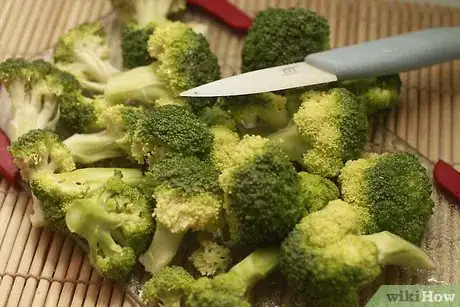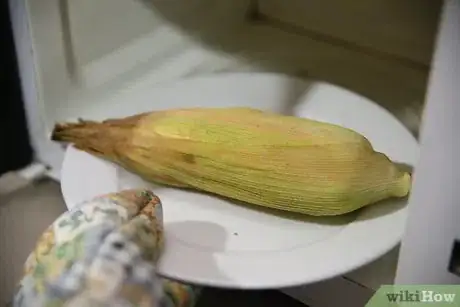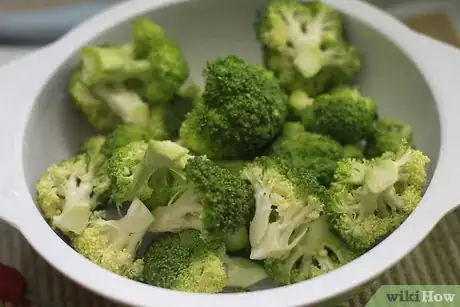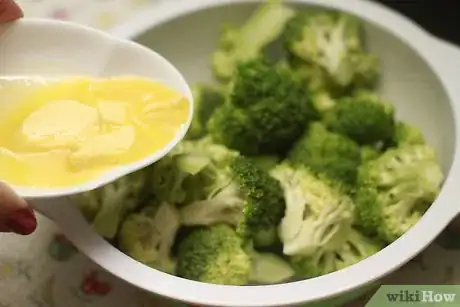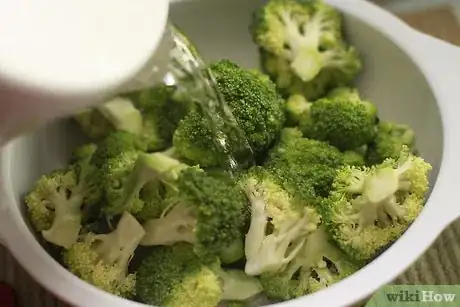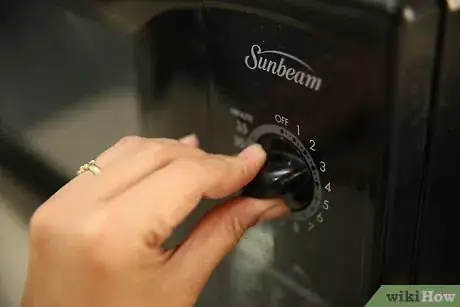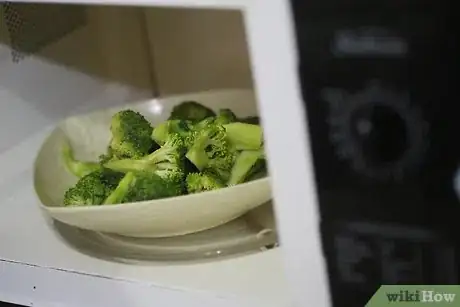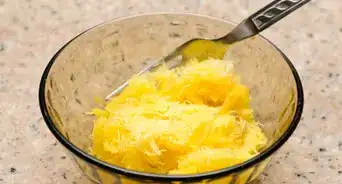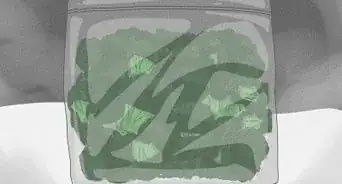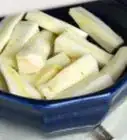X
wikiHow is a “wiki,” similar to Wikipedia, which means that many of our articles are co-written by multiple authors. To create this article, volunteer authors worked to edit and improve it over time.
This article has been viewed 186,984 times.
Learn more...
Healthy eating can be difficult when resources and time are scarce. Luckily, your handy-dandy microwave will do all the work for you when it comes to cooking your vegetables. Just wash, dry, and microwave for a few minutes, and your veggies are ready to eat!
Steps
-
1Prep your vegetables. Of course, this will mean different things depending on the item. Generally speaking, small, even chunks is the way to go.
- It is generally a good idea to cook vegetables separately so that nothing is over- or under-cooked. However, if you must mix them up, cut the vegetable that requires more cooking into smaller chunks. For example, if cooking potatoes and cauliflower together, make sure that the potato chunks are much smaller than the cauliflower florets.
- In the case of corn on the cob, keep the husk on. Because corn is a grain, the loss of water results in starchier, firmer corn. The husk helps prevent this loss of moisture.[1]
-
2Put the vegetables in a microwave-safe bowl. For safety reasons, bowls that do not heat up in the microwave are preferable (such as Pyrex glass bowls). However, any microwave-safe bowl used carefully with oven mitts should do the trick.[2]Advertisement
-
3Lightly season. Microwave cooking results in a texture much like steamed vegetables (which makes sense; microwave radiation excites water molecules in food, which increases temperature and results in water converting to steam). Heavy seasoning is rarely necessary because the vegetable retains much of its original flavor. A little bit of salt and pepper is sufficient; a pinch of spices or herbs will be more than enough.
-
4Microwave on high! Add about 3 tablespoons of water to the bowl for every pound of vegetable.[3] Generally, firmer vegetables such as beets or turnips will take longer to cook, whereas softer, moister vegetables such as broccoli take much less. Leafy greens such as spinach take very little time at all. Cook for approximately ½-2/3 the recommended time, then check each minute after with a wooden skewer.[4]
- For reference, potato chunks generally take about 8 minutes, broccoli florets about 4 minutes, and spinach about 3 minutes per pound.[5]
- Understandably, larger chunks also take more time to cook that smaller bits. Take this into account.
- Consult this chart for more specific cooking times.
Advertisement
Community Q&A
-
QuestionCan I add oil to roast veggies?
 Community AnswerYes. Don't expect them to be crispy, though.
Community AnswerYes. Don't expect them to be crispy, though. -
QuestionAre vegetables less nutritious when cooked in the microwave?
 Community AnswerNo. A lot more nutrients are actually retained with this method of cooking than when boiling for example, where water-soluble vitamins are lost in the water. Microwave cooking is actually recommended for this reason.
Community AnswerNo. A lot more nutrients are actually retained with this method of cooking than when boiling for example, where water-soluble vitamins are lost in the water. Microwave cooking is actually recommended for this reason. -
QuestionHow long should I cook potatoes in the microwave?
 Community AnswerI would start with five minutes, then test it with a knife to see how soft it is, and then perhaps heat it in two minute increments after that.
Community AnswerI would start with five minutes, then test it with a knife to see how soft it is, and then perhaps heat it in two minute increments after that.
Advertisement
References
- ↑ https://www.thekitchn.com/how-to-cook-corn-on-the-cob-in-the-microwave-cooking-lessons-from-the-kitchn-205204
- ↑ https://www.realsimple.com/food-recipes/tools-products/cookware-bakeware/food-containers-safe-for-microwave
- ↑ https://www.thekitchn.com/how-to-steam-broccoli-in-the-m-47176
- ↑ https://www.seriouseats.com/2017/07/how-to-steam-vegetables-in-the-microwave.html
- ↑ https://www.bettycrocker.com/how-to/tipslibrary/charts-timetables-measuring/fresh-vegetable-cooking-chart
About This Article
Advertisement
